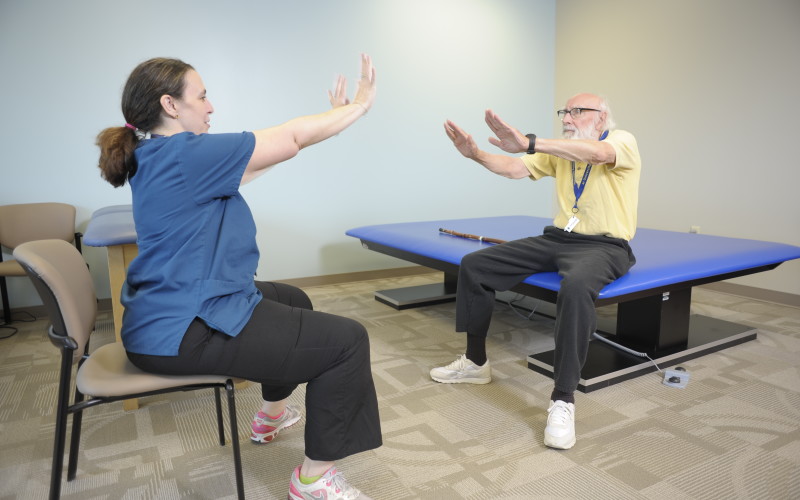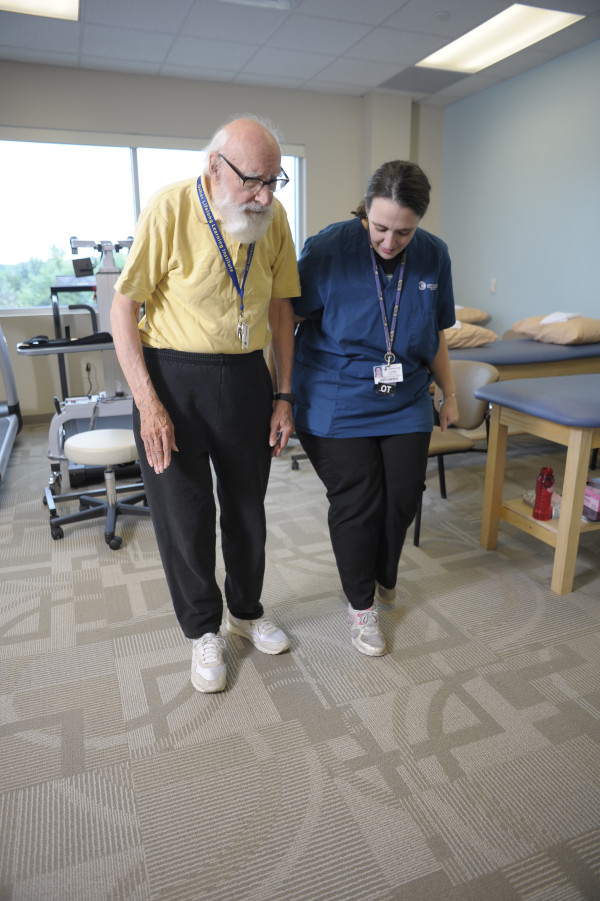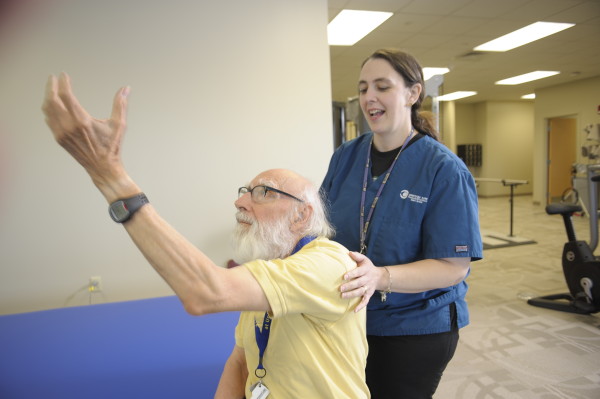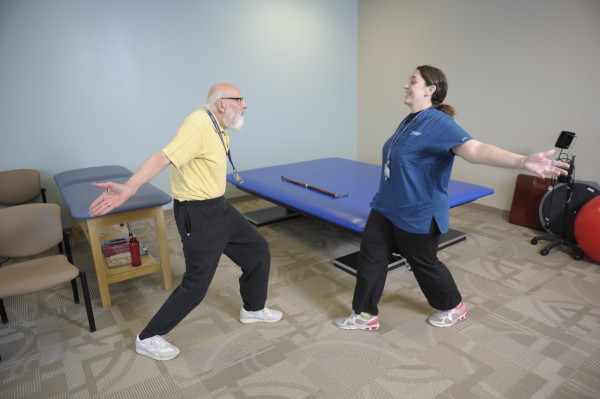BIG therapy is making a big difference for people with Parkinson’s disease

A unique therapy for Parkinson’s disease offered at Christiana Care Health System’s Concord Health Center is attracting interest from patients near and far — even as far away as China.
(LSVT) BIG therapy is an adaptation of the Lee Silverman Voice Treatment (LSVT), which was developed in 1987 to improve vocal strength and articulation in people with Parkinson’s disease. Through a repetitive series of large movements that helps to retrain the brain, (LSVT) BIG therapy has been shown to restore balance and improve movement in patients with Parkinson’s symptoms.
Laurie Scott, OTR/L, has been certified in BIG therapy for more than five years and has offered the four-week program at Christiana Care’s Rehabilitation Services practice at Springside Plaza, in Glasgow. Now she has brought it to the Concord center in Chadds Ford, Pa., making it accessible to neighbors in the northern part of Delaware and nearby Pennsylvania.

Patients undergoing the therapy show rapid improvement — sometimes after only one or two sessions. One patient, a young man in his 30s, came to Concord from China just for the treatment, Scott said. “He came in with rounded shoulders, and he complained of discomfort in his upper back and neck,’’ she said. “By the third session, he felt much better and looked better. He stood taller, with better posture, felt less pain. His stride was much longer. We felt it was such a big accomplishment. ‘’
Scott enjoys sharing those moments with her patients they realize the progress they’re making. “They’ll go to do something and it’s not difficult anymore. I tell patients that my job is to give you back whatever pieces of your life Parkinson’s has taken,” she said.
Parkinson’s disease is a progressive disorder of the nervous system characterized by tremor, rigidity of muscles and a reduction in the pace and size of movement.

“Movement becomes smaller. There is a shuffling gait, less arm swing, a softer voice,’’ she said. It happens over time, with symptoms worsening as dopamine diminishes in the brain. Often, patients are unaware of the subtle changes occurring until someone else points them out.
“Their brains think they’re moving fine,’’ she said. “On a scale of one to 10, with five being normal, a person with Parkinson’s disease perceives that they’re walking at five, but they’re really walking at two.’’
The goal of BIG therapy is to reprogram the brain, to drill large exaggerated movements into the person’s mind.
“At first they feel ridiculous, ’’ she said. “But if they work that thought process of thinking BIG and walking BIG into their lives, they may not get to 10 but might get to a four. With this high level of amplitude, the brain registers bigger movements as normal.’’
At a recent BIG therapy session, Scott stood before patient Jim Weiher, 81, and said, “watch me and do what I do.’’ Taking a giant step forward, Scott threw her arms out to the sides, palms up. Weiher, who uses a walking stick to help with his balance, mimicked Scott’s movements, though his were constrained by the Parkinson’s symptoms he has experienced for several years.
Scott led Weiher through a series of amplified body motions designed to train his brain to work around the loss of dopamine, a brain chemical used by neurons to control movement and other functions.
For Weiher, a retired DuPont research chemist who teaches German at the Academy of Lifelong Learning, Parkinson’s symptoms started three or four years ago.

“I stood up one day and my left foot wouldn’t rise,’’ Weiher said.
He began traditional rehabilitation, then heard about BIG training from a therapist. Weiher took to the Internet to investigate. “After researching it, I’ve come to the conclusion that the (LSVT) BIG program is super,’’ he said. “It’s the neuroplasticity of the brain — if one area is not working, the brain has the ability to rewire itself.’’
Weiher found a list of 20 therapists offering BIG treatment within 30 miles and emailed all of them. He said that he chose Christiana Care’s Concord Health Center because of convenience to his North Wilmington home and because he learned that Scott has been certified in BIG therapy longer than any therapist in Delaware.
During his first session, he worked hard and left with an envelope of instructions for practice at home. He felt tired but motivated.
“No effort, no progress,’’ he said with a smile.
The BIG program includes sessions three or four times a week, combined with a rigorous home program. Scott said that BIG is considered one of the only restorative therapies proven for Parkinson’s disease.
“We’re looking to restore function, and improve movement patterns and balance,’’ she said.
The goal is for patients to learn viscerally, without over-thinking.
“With traditional therapy we tend to verbalize like crazy. With this, we’re only giving two or three verbal cues: Watch me and do what I do.’’